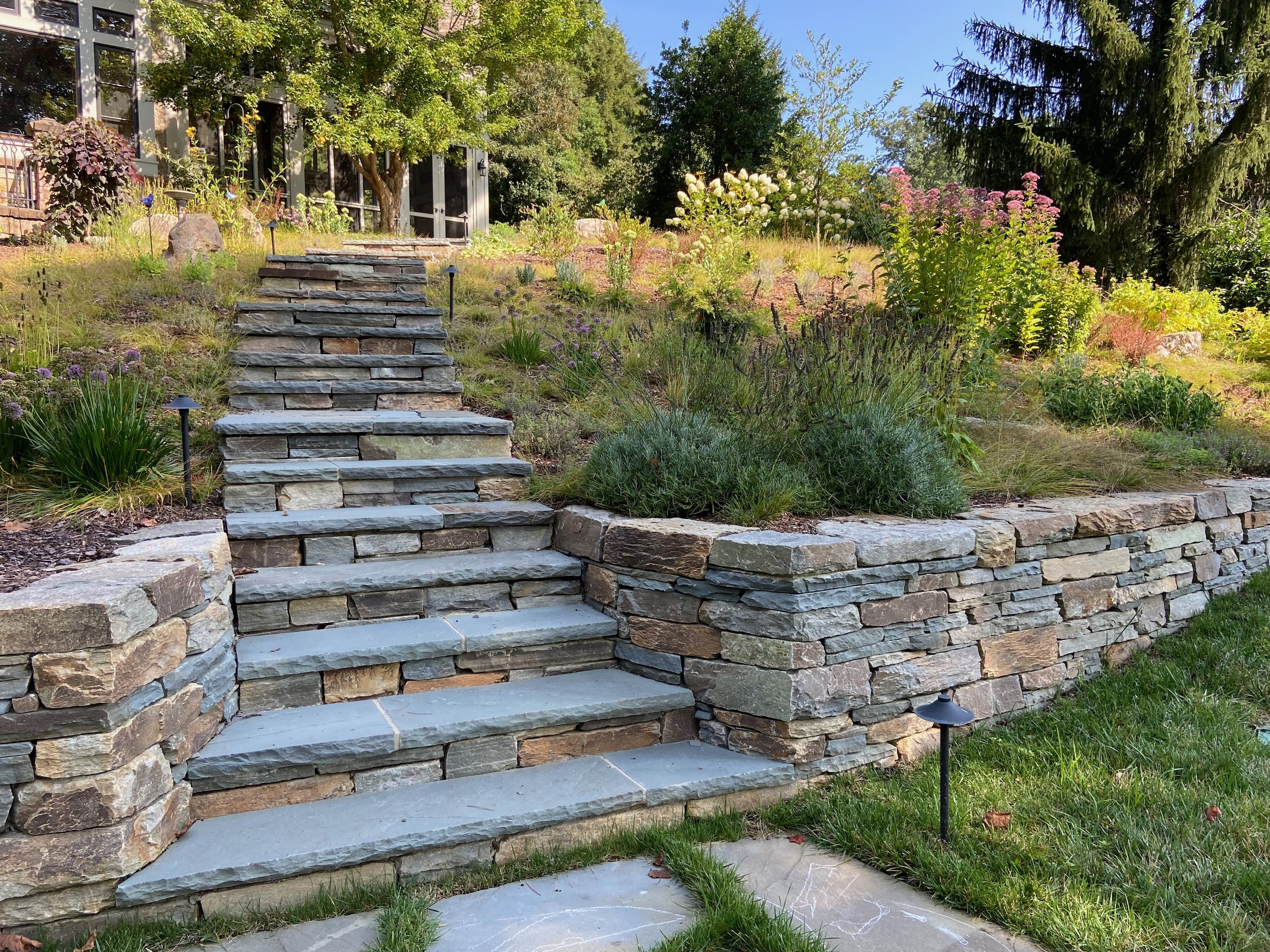Designing with Stone
When designing with stone, I like to think about my horizontal and my vertical surfaces as discrete elements. I prefer to use one material (or mixture) for all the vertical surfaces and a different material for all the horizontal surfaces.
Generally, the vertical surfaces are stone walls, step risers, veneers, fireplace faces, and columns. The horizontal surfaces include patios and paths, step treads, column caps, seating caps or bench tops, and in the case of a fireplace, the mantle and the hearth. I find that organizing the materials in this way gives a clear visual theme throughout a project.
This is not a hard and fast rule, but a general guide. When I deviate from this guideline, it is because I have a compelling reason to do so: a specific client request, an unimaginably cool specimen stone, an unexpected effect. Sometimes there’s existing stonework on a property or home that I want to match or reference in my part of the project. In these cases, I may introduce additional elements. No matter what, I favor a cohesive design sense, where all the work belongs together, looks intended and thought out.
In this context, a mixture of stones can be considered as a material. I love a kitchen sink wall. It’s just that whatever mixture is selected, should be used throughout the whole scope of the project. My rule of thumb is that most materials can be mixed together in a wall, but they should be mixed from the very beginning through to the end. It’s important to have enough of each material for the mixture available. It shows up when you run out halfway through.
Theme- Hooper’s Creek verticals wall/Pennsylvania horizontals
The vertical elements: the wall and the step risers, employ Hooper’s Creek, a native gneiss. The horizontal elements: the step treads and flagstone landings, are made of Pennsylvania stone. This is a favorite combination for me. We use some of the Pennsylvania stone in the wall. It adds some color and texture; variation to the overall piece and helps to tie the theme together visually.
Variation- Tennessee fieldstone vertical/ Gray Tennessee horizontal
This wall is made of Tennessee fieldstone. The flagstone patio, slab steps (not pictured), arms rests, and bench are all made of Gray Tennessee sandstone. I broke with the theme on the seat back. That vertical element employs large pieces of gray Tennessee sandstone with narrow stacks of the same fieldstone found in the walls. The strong visual interest of an unexpected design element contributed to the decision to break my own guidelines.



